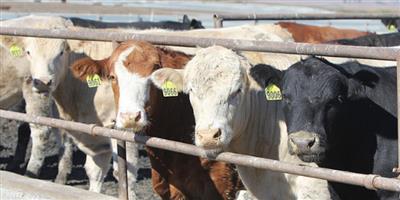Today, the U.S. Department of Agriculture issued its final rule that will require certain cattle and bison to have electronic identification (EID) eartags if they are moving from one state to another. The advance copy of the rule states that 180 days after publication, all official eartags applied to such cattle and bison must be readable both visually and electronically.
“Rapid traceability in a disease outbreak will not only limit how long farms are quarantined, keep more animals from getting sick, and help ranchers and farmers get back to selling their products more quickly – but will help keep our markets open,” said Dr. Michael Watson, APHIS Administrator.
The USDA final traceability rule amends a previous 2013 rule that requires sexually intact cattle 18 months of age or older, rodeo and exhibition cattle, and dairy cattle moving interstate to have an official form of animal identification. The 2013 rule, which cattle producers already comply with, instituted visual ID tags for interstate movement. The new final rule switches producers to electronic ID tags.
In a statement USDA said that, “One of the most significant benefits of the rule for farmers and ranchers will be the enhanced ability of the United States to limit impacts of animal disease outbreaks to certain regions, which is the key to maintaining our foreign markets. By being able to readily prove disease-free status in non-affected regions of the United States, we will be able to request foreign trading partners recognize disease-free regions or zones instead of cutting off trade for the entire country. Traceability of animals is necessary to establish these disease-free zones and facilitate reestablishment of foreign and domestic market access with minimum delay in the wake of an animal disease event. “
R-CALF USA CEO Bill Bullard expressed his organization’s disappointment with the rule.
“It’s no surprise that while USDA claims this EID mandate is to improve disease control, it proudly discloses in the rule’s accompanying press release that ‘the most significant benefits of the rule’ is to maintain foreign markets.
“This is because the beneficiaries of this rule are not cattle producers or consumers. Instead, this rule is intended to benefit multinational beef packers and multinational eartag manufacturers who will profit at the expense of cattle producers and consumers. In fact, because the rule is cost-prohibitive for independent cattle producers, the agency is using millions of taxpayer dollars to give millions of their unnecessary EID eartags away.
“We will fight against the implementation of this disastrous rule that infringes on the freedoms and liberties of our nation’s independent cattle farmers and ranchers. This is government overreach at its worst. Our goal will be to restore for our nation’s cattle producers the flexibility the USDA promised them when they agreed to the agency’s 2013 rule”
The National Cattlemen’s Beef Association supported the rule. Wyoming Rancher and NCBA President Mark Eisele issued the following statement:
“USDA’s final traceability rule updates the existing requirement for animal identification that has been in place since 2013, switching from solely visual tags to tags that are both electronically and visually readable for certain classes of cattle moving interstate. Many producers are already familiar with using these visual tags and under the new rule, they will instead use electronic tags.
NCBA has worked hard to secure $15 million in funding for producers to reduce the cost of implementing this change. We also remain committed to safeguarding producers’ private data and continuing to reduce the cost of ear tags for farmers and ranchers.
Our industry faces a tremendous threat from the risk of a future foreign animal disease on American soil. To avoid devastating financial losses during a potential outbreak and to help producers quickly return to commerce, we need an efficient animal disease traceability system.”
NCBA adds that electronic tags are “easier to read and would yield a faster traceability response during a foreign animal disease outbreak.”
It is estimated that a foot-and-mouth disease outbreak in the U.S. would lead to $221 billion in economic losses. NCBA points out that only 11% of the U.S. cattle herd is impacted by this final rule and the rule will not take effect for six months to provide time for producers to prepare.
In the final rule announcement, USDA noted the department is committed to implementing a “modern animal disease traceability system that tracks animals from birth to slaughter using affordable technology that allows for quick tracing of sick and exposed animals to stop disease spread.”
USDA will continue to provide tags to producers free of charge to enable response to a potential foreign animal disease. For information on how to obtain free tags, see APHIS’ Animal Disease Traceability webpage.
A copy of this rule may be viewed today, and the rule will be published in the Federal Register in the coming weeks. This rule will be effective 180 days after publication in the Federal Register.
###
R-CALF/NCBA/USDA-APHIS


